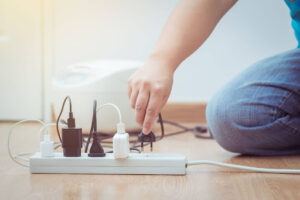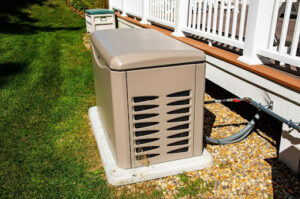
What to Do After Your House Is Struck by Lightning
Lightning strikes can be a terrifying experience for any homeowner. The powerful boom and bright flash are unmistakable, leaving you to wonder about the safety
Humidity is the enemy of comfort. Heavy air makes a room feel hotter than it is. Not only can high humidity make it hard to get a good night’s sleep, but it can also promote mold growth. Even worse, viruses are known to spread easier in humid conditions.
Here are five helpful tips on how to reduce humidity.
Priced at less than $20, a digital hygrometer will prove to be a useful tool in your quest for comfort. A hygrometer takes the guesswork out of determining your home’s humidity levels, which should be between 40 to 50 percent.
This weather instrument is engineered to measure the specific amount of vapor in the air. You’ll know exactly when the humidity is either too low or too high.
A hygrometer is easy to use. After placing the device about three feet from the floor, give it at least a few minutes to detect the temperature of the air. It will then display a readout. However, keep in mind that you should have the device recalibrated every so often.
Ceilings fans are not just for decoration. They can actually help dial down your home’s humidity. During the summertime, be sure your ceiling fans are switched to turn in a counterclockwise direction. Aside from creating a cooling effect, the breeze will also help evaporate excess moisture.
Fortunately, modern ceiling fans do not consume a great deal of energy. You can leave them running throughout the day without worrying about seeing a spike in your utility bill.
Any room in your house can suffer from high humidity. However, the kitchen and bathroom are especially susceptible. While you’re cooking and showering, humidity levels can quickly start to rise. This is why you should always run your exhaust fans when doing these activities. Exhaust fans work to pull hot, humid air from the room.
Your central air system cools your home by extracting warm, heavy air, so keep it running! However, several things can interfere with your AC’s dehumidification process.
Your AC system can’t do it alone. Using it in conjunction with a whole-home dehumidification system is the most effective way to maintain drier air. A dehumidifier can easily remove more than 20 pints of water from the air per day.
While a whole-home dehumidification system should work well, it may not fit everyone’s budget. The good news is that single-room humidifiers are available. They are smaller, more affordable, and consume less energy.
Bottom line: We live in one of the most humid regions in the country. That presents certain challenges when it comes to your comfort. Fortunately, the pros at Universal Home Experts are up to the challenge of creating the perfect indoor climate for your home. To schedule your appointment, call (713) 364-0226.

Lightning strikes can be a terrifying experience for any homeowner. The powerful boom and bright flash are unmistakable, leaving you to wonder about the safety

It’s easy to overlook the silent threats that lurk within the walls of your own home — especially when it comes to the electrical system.

In today’s world, where unpredictability seems to be the only constant, ensuring the reliability and safety of our homes has become paramount. Whether it’s due